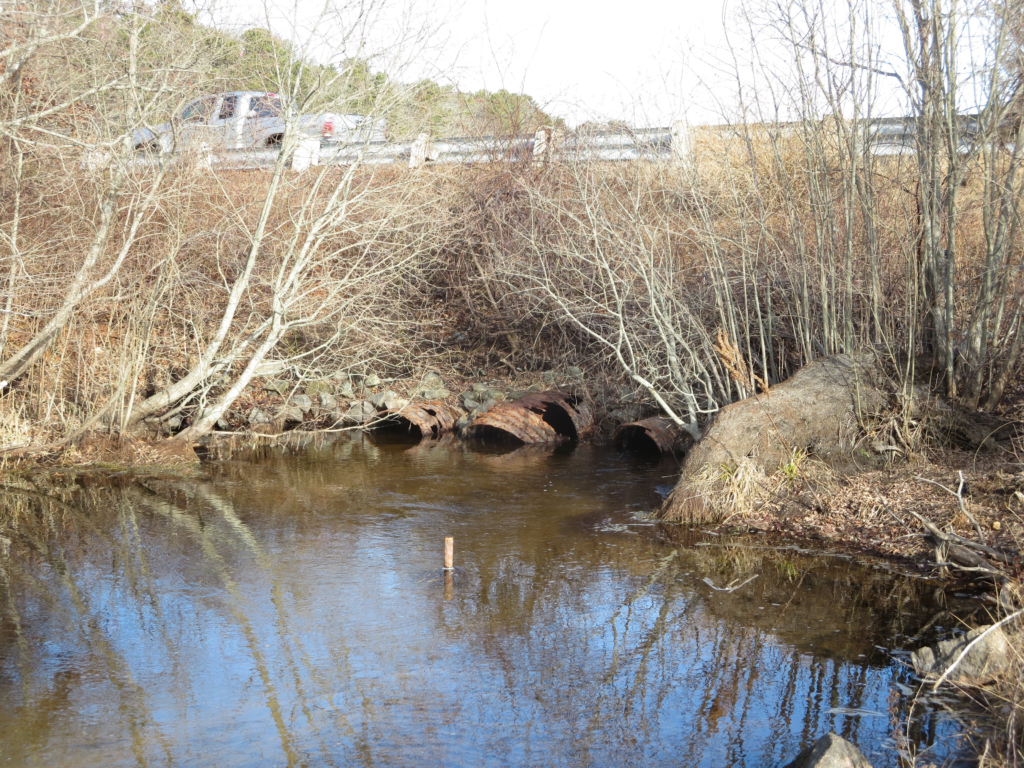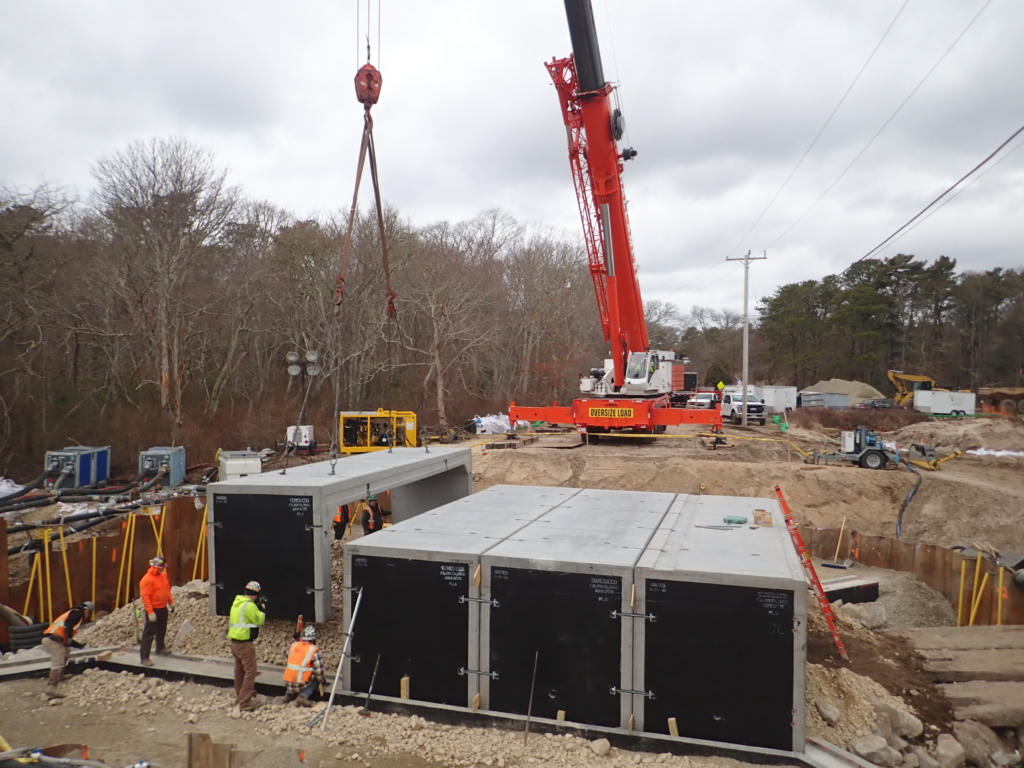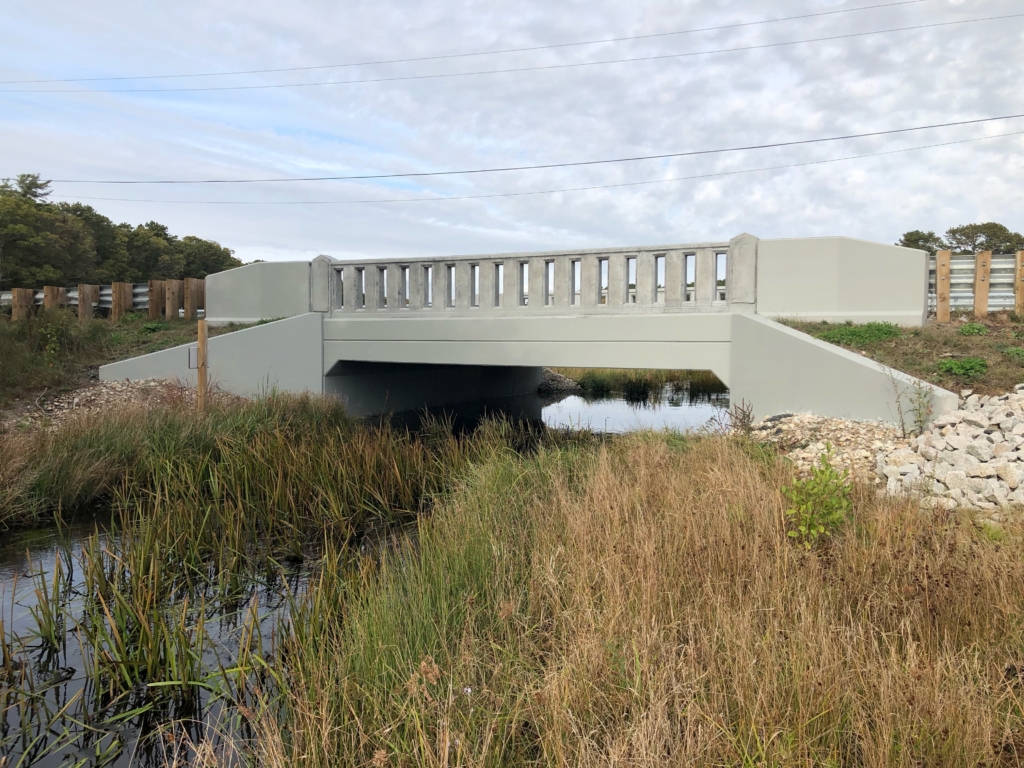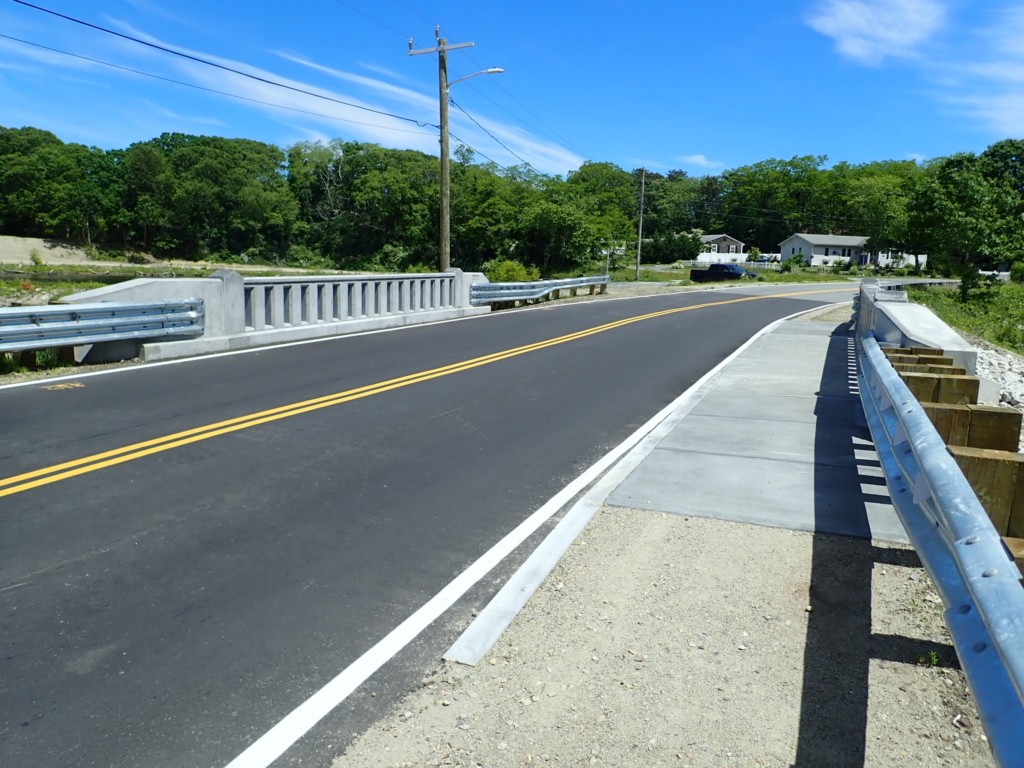Celebrating Coonamessett River Restoration and John Parker Road Bridge
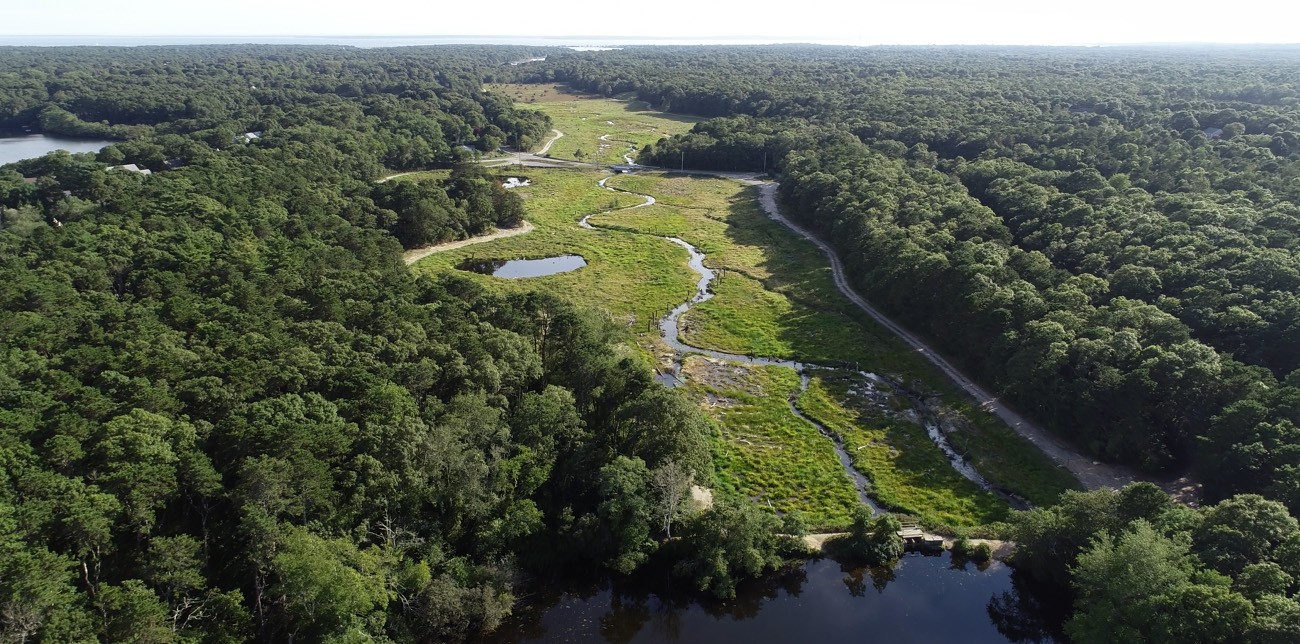
Inter-Fluve’s design restores the curves and water flow in the Coonamessett River.
The Town of Falmouth, Massachusetts recently hosted a ribbon-cutting where Inter-Fluve, Tighe & Bond, and their partners, local educators, and members of the area’s Native Wampanoag joined to celebrate a true ecological marvel, the Restoration of the Coonamessett River and the design of the John Parker Road Bridge.
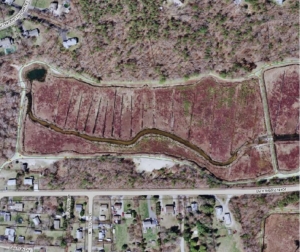
Farming and river blockages cause the river to become straight, shallow, broad & sandy.
Conservation of the Coonamessett River corridor has been a priority for the Town for more than 50 years. The Coonamessett River Greenway consists of 244 acres of conservation land owned by the Town of Falmouth Conservation Commission and The 300 Committee Land Trust. Within the area, the Coonamessett River flows approximately three miles from Coonamessett Pond south to the Great Pond estuary, which discharges two miles further south into Vineyard Sound. The river source is mostly groundwater.
Man-made alterations to the river began in the 1700s and continued for centuries. Mills were built on the river before cranberry cultivation began in the late 1800s. Floodplains and wetlands were buried by water and then sand for 300 years. The mills and cranberry operations blocked fish passage through the construction of dams and berms. A total of 27 culverts and barriers were constructed and impacted fish population. The river and floodplain habitats were degraded through the removal of native vegetation, straightening the stream channel, changing the channel geometry, and inundating the channel and floodplains with formed ponds. These changes also impacted birds of prey such as the Osprey (river hawk) and the Bald Eagle population.
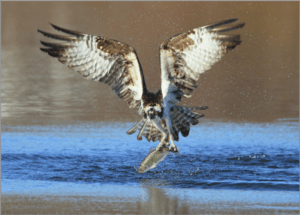
Osprey dives for a fish in the Coonamessett River.
Recognizing the ecological damage to the conservation corridor from past industrial development, the Town of Falmouth called on Inter-Fluve to restore the area. The Town’s goals were to:
- Establish a thriving, self-sustaining river and wetland ecosystem that supports aquatic organisms and wildlife.
- Increase coastal resiliency by removing blockages and creating a connection to the floodplain.
- Increase recreational and educational opportunities for people to discover the environmental and cultural history surrounding the river.
Inter-Fluve’s experts designed the restoration of the Coonamessett River to address the above goals and find solutions to high water temperatures that were discouraging marine life, and avoid disruption of active cranberry bogs. Tighe & Bond was enlisted to replace the three degraded 24-inch diameter CMP culverts to meet MassDOT requirements. They designed the John Parker Road Bridge, a 24-foot pre-cast concrete frame on pedestal spread footings, to be tall and wide enough to handle fish passage, flooding, and allow any debris to continue flowing down the river. With an aesthetically pleasing design, a wider bridge structure, and sidewalks with guard rails, the public can now walk safely along the road and enjoy the expansive view of the bogs. The materials for this precast concrete bridge were chosen to provide a low-cost and durable solution and one that would hold up to the exposure to saltwater. The engineers limited the amount of exposed steel and avoided any corrugated metal pipe or steel beams in the design. A shorter span bridge was chosen, and the installation method of Accelerated Bridge Construction also cut down on project costs and travel disruption.
- The deteriorated culverts under John Parker Road.
- SumCo construction crews use a crane to place the precast bridge sections along John Parker Road.
- The finished John Parker Road bridge allows for free-flowing water and unobstructed fish passage.
- The new sidewalk on John Parker Road bridge.
“The Coonamessett River restoration achieved its goals to be a nature-based solution to increase resiliency to climate change and community resiliency. This project has increased awareness and stewardship of natural resources in Falmouth and both formal and informal educational programs.” – Elizabeth Gladfelter, Falmouth Conservation Commission Member
The Town of Falmouth has noted that since the restoration, seeds from wetland plants that had been buried for 300 years under mill ponds and cranberry bogs sprung to life once original wetland soils were uncovered. Insects (butterflies, dragonflies, and pollinators), fish, and other wetland animal species populations have shown dramatic increases. The John Parker Road Bridge provides an attractive durable bridge in compliance with modern MassDOT requirements and Massachusetts stream crossing standards. Fish now pass along the restored river today, and for decades to come. The project’s contribution is in addressing past environmental issues, upgrading to modern design standards, and providing a resilient restored environment to help address the needs of the future.
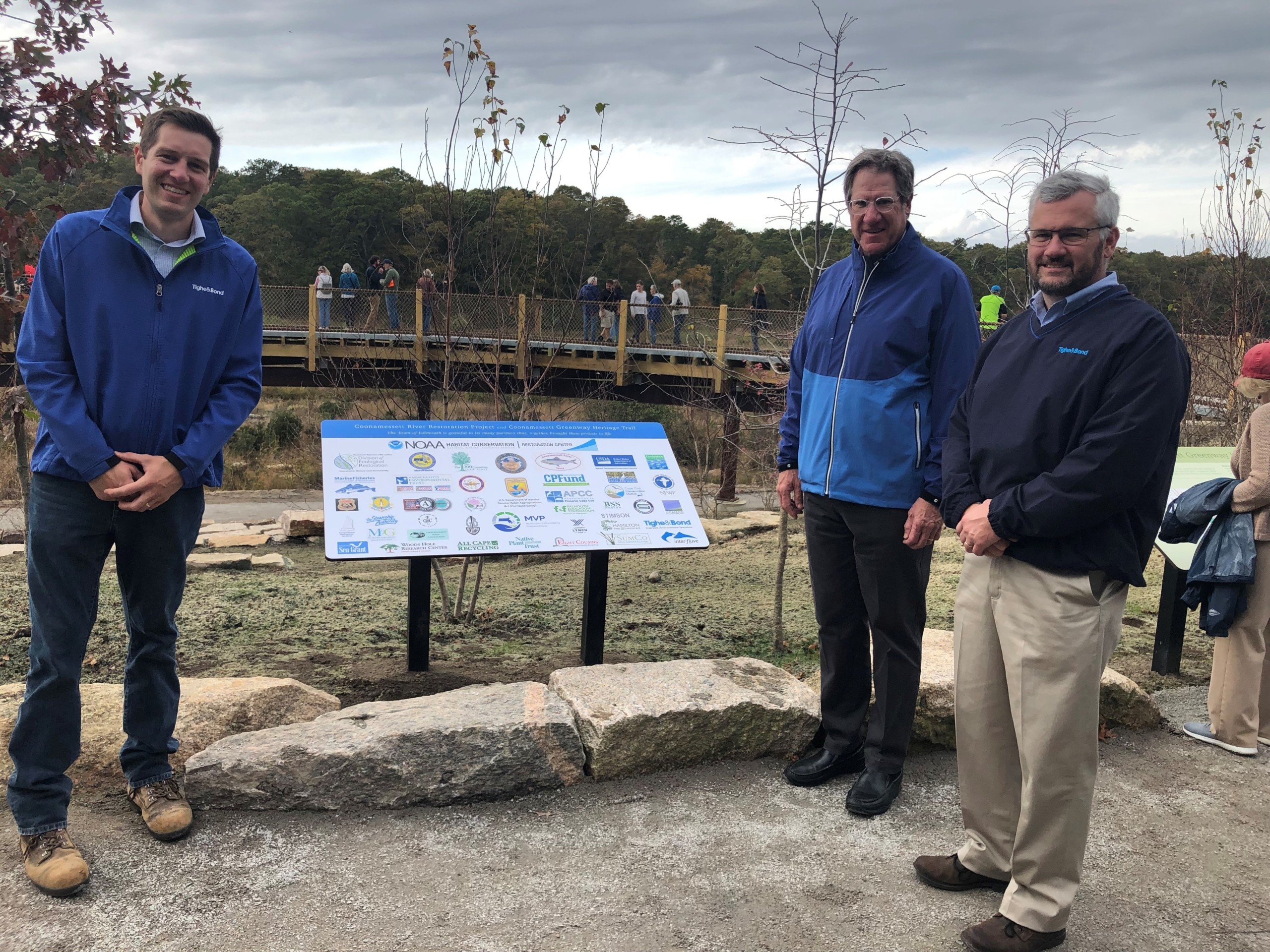
Left to Right: Project Manager Eric Ohanian, Vice President Adam Yanulis, and Sr. Project Manager Dan Murphy attend the celebratory ribbon cutting.



